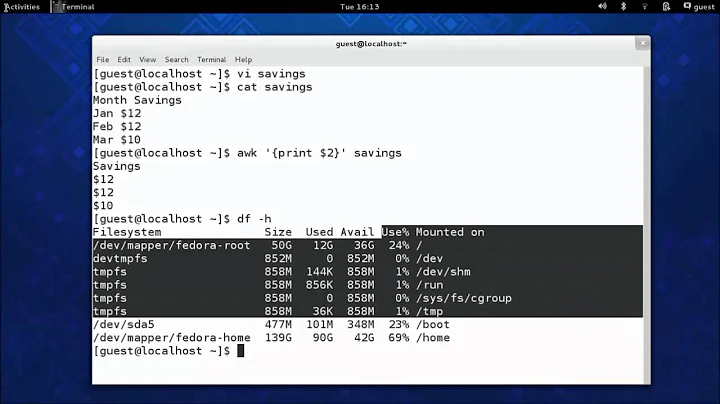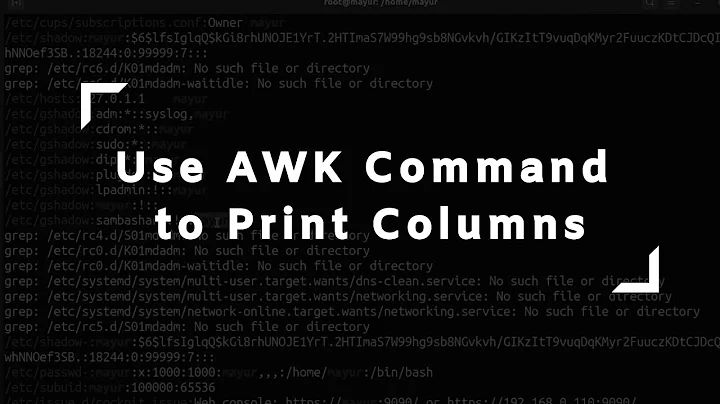How to use Unix Shell to show only the first n columns and last n columns?
6,654
Solution 1
awk -F, '{print $1, $2, $(NF-1), $NF}' < input
More generally (per the Question's title), to print the first and last n columns of the input -- without checking to see whether that means printing some columns twice --
awk -v n=2 '{
for(i=1; i <= n && i <= NF; i++)
printf "%s%s", $i, OFS
for(i=NF-n+1; i <= NF && i >= 1; i++)
printf "%s%s", $i, OFS
printf "%s", ORS
}' < input
(using -F as needed for the delimiter)
Solution 2
perl:
echo a,b,X,X,X,X,c,d | perl -F, -slane 'print join ",", @F[0..$n-1, -$n..-1]' -- -n=2
a,b,c,d
Solution 3
You can use this sed too
sed -E 's/(([^,]*,){2}).*((,[^,]*){2})/\1\3/;s/,,/,/'
Related videos on Youtube
Author by
PoorLifeChoicesMadeMeWhoIAm
Updated on September 18, 2022Comments
-
PoorLifeChoicesMadeMeWhoIAm over 1 year
I have many csv files. The original design was supposed to have five columns.
I just found out that the middle column of the csv file has a string with arbitrary number of commas in it and it is not quoted properly. This leads to rows with arbitrary number of columns.
How do I get just the first two and last two columns of these csv files?
Since the number of commas can change from row to row I need a way to specify first two and last two columns.
-
user1730706 over 6 yearsyou dont have to use a redirect
-
 Jeff Schaller over 6 yearsThat’s correct. It’s a habit I’m trying to form after seeing advice in that direction from other U&L members here. It means that the shell reports errors/failures instead of the utility — more consistency. It also prevents the utility from running if the IO redirection fails.
Jeff Schaller over 6 yearsThat’s correct. It’s a habit I’m trying to form after seeing advice in that direction from other U&L members here. It means that the shell reports errors/failures instead of the utility — more consistency. It also prevents the utility from running if the IO redirection fails.




